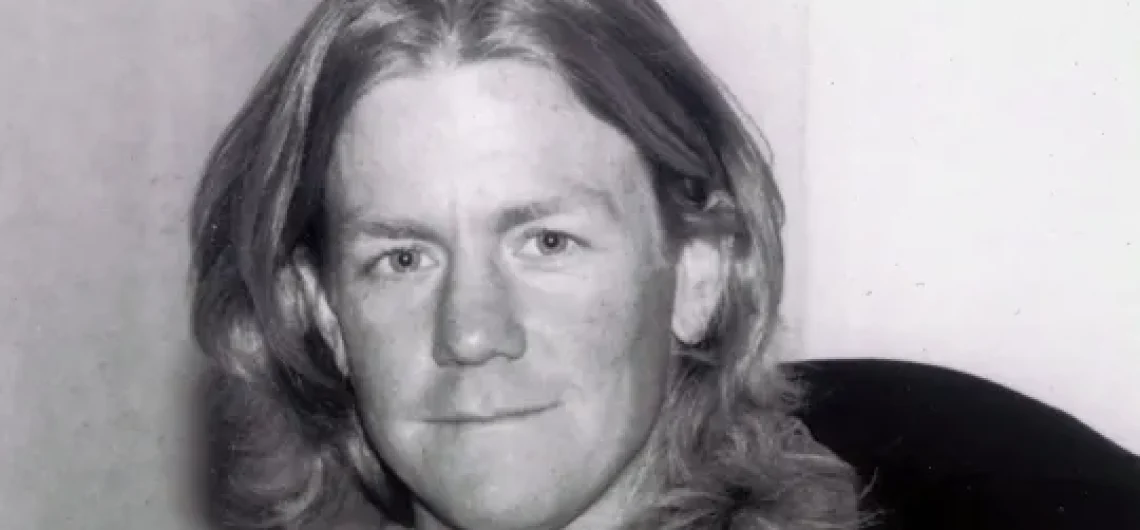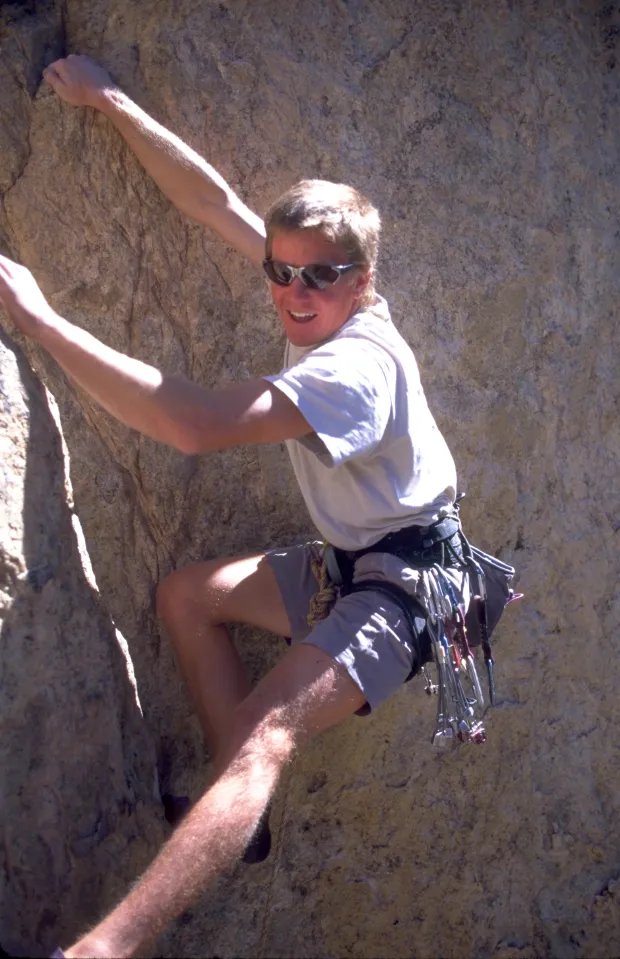David Bridges lost his life in a tragic avalanche that occurred east of Mount Everest in the Himalayas back in 1999. After 17 years, hikers stumbled upon his frozen body embedded in the ice. During the autumn of 1999, David Bridges, an experienced climber and skilled cameraman, met his untimely demise in an avalanche while on Shishapangma, located to the east of the renowned Mount Everest in the majestic Himalayan region. It wasn’t until this spring that hikers came across his preserved body, encased in ice. His brother, Dan Bridges, is now undergoing rigorous training to bring David back home. Despite his previous climbs on Mount Rainier and adventurous treks through the mountains of Nepal, it has been 14 years since Dan’s last hiking expedition. Striving to regain his physical conditioning, he is determined to be a part of the recovery team. Armed with his brother’s ax, Dan is preparing for the challenging journey that lies ahead. Touched by his family’s quest, generous individuals have been donating equipment and supplies to aid Dan in his mission to provide his brother with a fitting final resting place. We offer our heartfelt wishes for success to Dan as he embarks on this poignant and remarkable endeavor.
On October 5, 1999, Dave Bridges and Alex Lowe were caught in an avalanche while exploring a possible ski route on the southwest side of Shishapangma. The remains of Bridges and Lowe were discovered this spring. Media attention has primarily focused on Lowe, celebrated as one of the world’s leading mountaineers. Bridges, often labeled as a mere “cameraman” or “filmmaker”, was much more than that. A talented rock climber, alpinist, and paraglider, Bridges was a cherished individual whose tragic passing deeply impacted those who knew him. Described by his climbing partner Brad Singer as one of the kindest and most humble individuals, Bridges was praised for his down-to-earth and gentle nature. His love for climbing blossomed when his family relocated to the San Bernardino Mountains in his early teens. With unwavering support from his non-climbing parents, Bridges honed his skills and found his passion in climbing. Under the mentorship of Mike Rigney, he received climbing lessons and spent countless hours on the rocks, where he truly came alive.
Soon Bridges began climbing compulsively around southern California and Yosemite. Fewer than two years after he first tied into a rope, he was chalking up on classic Yosemite rock routes such as the Lost Arrow Spire Tip (5.7 C2; 512b, 250′) and Lunatic Fringe (5.10c, 140′).
Dave’s brother, Dan, described a sort of instinctual bodily awareness that helped Dave work out the moves to complex routes in his mind: “Dave went to someone’s house and they had a highwire. [He] just studied it for a second, and then he just walked across it…. He just figured it out. And I think that’s where the beauty was. He knew every movement of every route that he was going to do.”
Dave quickly became well-known and respected in the local community for his exceptional skills. Dan recalled how Dave’s talent attracted other skilled climbers, including Steve Untch who was fourteen years older and became a close friend. Dan vividly remembers the moment when Dave’s interest in climbing was sparked while watching Untch’s slideshow at a restaurant in Running Springs. From there, Untch guided Dave from rock climbing in southern California to challenging alpinism and high-altitude mountaineering expeditions across the globe. On these treacherous mountains, Dave exhibited incredible endurance that seemed almost mythical to his friends. Joel Koury marvelled at how Dave’s stamina would enable him to push on even when others were running on fumes. Brad Singer, a fellow climber, was impressed by Dave’s unmatched physical abilities, noting that he could effortlessly run at a pace that left Singer struggling to keep up. Despite Singer encouraging Dave to forge ahead, Dave chose to run backwards as a way to balance their respective workouts. According to Rigney, Dave’s natural aptitude for high-altitude challenges became evident as he conquered Denali at just 19 years old. His climbing achievements continued as he summited peaks like Chimborazo and Cayambe in Ecuador before venturing to the Himalayas for even more daring expeditions.
“I used to remind David every time he embarked on an adventure, ‘Dave, just make sure you return safely,'” Singer shared with Alpinist. “He was cautious and aware of his own limitations, but he was fully aware of the risks of Himalayan climbing. No matter how skilled you are, the dangers are always present.” During his initial Himalayan journey in 1994, Bridges accompanied Untch and climber Michael Groom in an attempt to conquer K2 (8611m). When Groom injured his knee at Camp II, Bridges and Untch set out from base camp to assist him on July 25. Due to food poisoning, Bridges stayed at the advanced base camp while Untch went on alone. While surveying the mountain for any signs of his descending companions, Bridges heard cries from a Japanese team. Initially mistaking it for rockfall or discarded equipment, he soon identified a figure in a red and yellow suit—a tragic sight. Untch had tragically fallen while rappelling on an old fixed-line. Bridges respectfully lowered Untch’s body into a crevasse, honouring their prior discussions on such a scenario. “I knew Steve would want to stay,” Dave wrote in Untch’s journal. “Suffering the loss of Untch was a setback for David. Although his passion for alpinism remained undiminished, he mourned the loss of a hero,” Singer revealed to Alpinist. “Yet, it only fueled his determination to excel in climbing, showing him the possibilities and achievements within reach.”
The following year, Bridges made a return to climbing Ama Dablam with Joel Koury and John Cleary. In anticipation of the journey, Dave trained Koury in ice climbing at a frozen waterfall in Utah. Koury initially dismissed Bridges’ advice about belaying techniques, but soon found himself dodging falling ice on the mountain. During the same trip, they encountered another climber introducing a friend to ice climbing. Koury turned to greet the newcomer, only to be met by someone with a similar blue nose and black eyes. Between 1994 and 1999, Bridges embarked on nine high-altitude expeditions. His filmmaking journey began on Baruntse in 1998, where he captured Chris Davenport’s ski descent. Davenport recalled Bridges’ unwavering support during their challenging climb. In 1999, Bridges documented Michael Groom and Lincoln Hall’s successful ascent of Makalu, all the way to the summit. Witnesses recalled Bridges multitasking, filming the climbers while scaling an 8000-meter peak without oxygen. Despite the climbers gasping for breath, Bridges remained composed, engaging them in conversations along the way.
As per Dan Bridges, Dave’s exceptional physical condition significantly contributed to his achievements. He reached the summit before Groom, turned back, and then calmly followed Groom up to the summit with his camera. Dan remarked, “And there was no shakiness in the camera. Normally, the footage would be all over the place.” Due to the high quality of his filmed footage, Koury recollected that The North Face asked Bridges to film Alex Lowe and Conrad Anker during a ski descent of Shishapangma. Koury recalled Bridges telling him, “I’m going to be climbing with the big boys.” To which Koury responded, “If there’s anyone I’ve met who can keep up with the big boys, it’s you.” According to Tyler Stableford’s article in Outside in 1999, Bridges had a demanding role during that expedition, being “the most hypoxic job on the mountain.” He needed to move back and forth, ahead of and behind the climbers, to capture compelling and diverse footage while carrying camera equipment. Bridges was dedicated to his work. Before departing, Koury remembered Bridges creating a detailed list of reminders for the expedition, such as “always position yourself above the climbers,” “carry extra batteries,” “ensure the lens is clean,” and “when unsure, film more footage.” “That’s just the type of person he was,” noted Koury.
On the afternoon of October 5, 1999, Alex Lowe, Conrad Anker, and David Bridges were hiking above base camp when a cornice broke some five thousand feet above them, causing an avalanche that injured Anker and engulfed Lowe and Bridges. Bridges, known for his mountain skills and photography, was also remembered for his kindness and humility by his friends. More than sixteen years later, the impact of their disappearance lingers, with friends like Brad Singer reflecting on how thoughts of Bridges often surface unexpectedly. While some people seek closure through the recovery of remains, Bridges’ friends have mixed emotions. The discovery of his remains brought back a flood of emotions, with both fond memories and deep pain resurfacing. There are differing opinions on whether to bring Bridges’ remains down from the mountain, with some feeling it would be more meaningful to leave him where his heart and soul lie after so many years.
- How Wawrzyniec Żuławski died in the Alps while trying to rescue two Yugoslav climbers
- Fredrik Ericsson Dies in First K2 Ski Descent Attempt
- Tomas Olsson’s tragic fall while attempting to ski down Mount Everest and how his body was discovered
- Ueli Steck; The decision that cost, one of the best mountaineers’ life on Everest
- Skiing in Africa’s High Atlas Mountains – Morocco
![]()



Comments